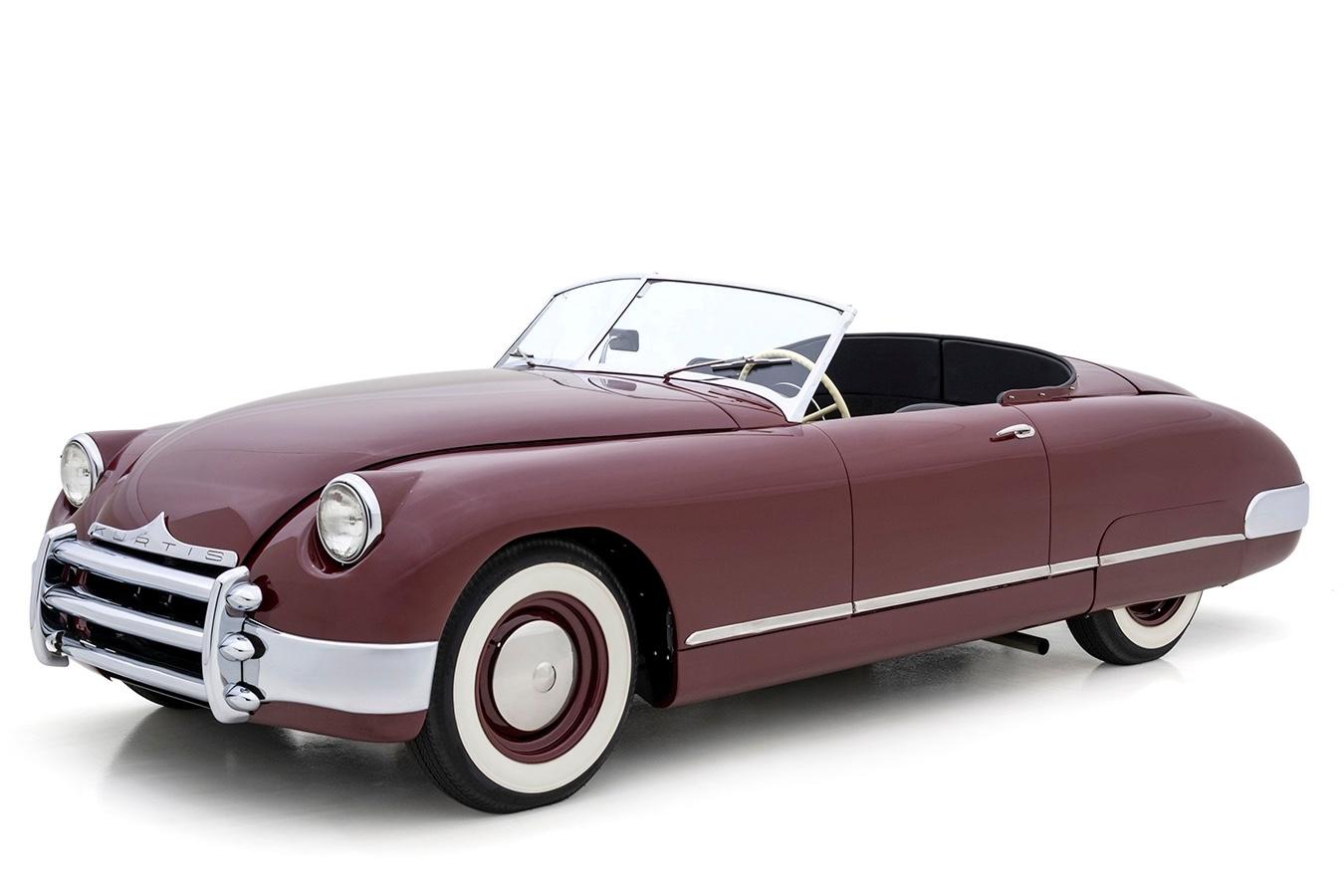1950 Kurtis Sports Car For Sale in St Louis , 2146379186
 Tweet
Tweet
1950 Kurtis Sports Car
Price: USD $199,500Frank Kurtiss reputation in American racing circles was already secure by the late 1940s, with his midget racers, sprint cars, and Indy machines setting the standard on tracks across the country. In 1948, he turned his attention to the road, creating a prototype sports car that carried his name and drew immediate attention for its low, streamlined form and formidable performance. Encouraged by the response, Kurtis began limited production in Glendale, California, in 1950. The resulting Kurtis Sports Car combined the sophistication of European-inspired design with the brute force of American V8 power, most often Cadillacs new 331-cubic-inch overhead-valve engine. Performance was remarkable: the very first production car reached 142 mph at Bonneville and graced the cover of the inaugural issue of Motor Trend magazine.
Despite its promise, production was extremely limited. Just 16 cars were assembled by Kurtis in California before the project passed into the hands of industrialist Earl Madman Muntz, who developed the four-seat Muntz Jet from the same basic concept. While the Jet reached wider production, the original two-seat Kurtis remains far rarer and more coveted today, standing as one of the earliest purpose-built American sports cars.
The example offered here is recognized as the final Kurtis Sports Car completed in Glendale and is believed to be the only surviving car that retains its original brass Kurtis firewall chassis plate. Its early life included a stint in Hollywood, when it was loaned for use in the 1954 film Johnny Dark starring Tony Curtis, further cementing its place in midcentury American motoring lore.
In the mid-1990s, the car benefitted from a meticulous concours-standard restoration overseen by Arlen Kurtis, son of Frank Kurtis, ensuring that the car was both mechanically sorted and visually faithful to its origins. Later refinements have improved ride quality and handling, including suspension work and the fitment of more suitable tires, while carefully preserving the integrity of the original restoration.
In its current state the Kurtis presents with sophistication, wearing its gracefully aged restoration. Despite being restored in the 1990s, the quality of the work has stood the test of time and would make the most seasoned collector proud of this Sports Car.
Finished in a deep maroon over black leather, the car is initially staid in appearance, but a closer look reveals the sportiness of the Kurtis. Chrome wheel covers, an ivory steering wheel, and whitewall tires add style and flair to the motorcar, while the brightwork remains in excellent condition. The raked, V-windshield adds to the sporting appeal.
The most attractive part of the Kurtis is what lies under the hood, its 331 cubic-inch Cadillac V8. The motor, fitted with dual Stromberg 6-122A carburetors and an Edmunds intake manifold, is mated to a three-speed gearbox, making a rowdy combination and truly American sports car.
Equally important, the Kurtis is accompanied by a remarkable file of documentation, including extensive restoration records, receipts, and period references. This level of provenancecombined with its direct ties to both Frank and Arlen Kurtisadds significant weight to its appeal. Few sports cars of the era carry such a clear connection to their creator, and fewer still boast both Hollywood credentials and such a complete, well-documented history.
Today, the Kurtis Sports Car is rightly recognized as a landmark in American automotive design. With only 16 examples built, each surviving car is an artifact of a pivotal moment when American manufacturers first began to challenge European dominance in the sports car field. For collectors seeking rarity, performance pedigree, and a direct link to one of the great names in American racing, this Kurtis represents a singular opportunity.
Offers welcome and trades considered.
- VIN: KB016
- Exterior: Red
Other Kurtis Cars
|
|
Hyman Ltd
|
Location: St Louis, MO, United States
|
Email the Seller
You may be able to finance this car.
Own this vehicle for only:
$1945/month | Apply Now!
Welcome to our collector car marketplace where we feature thousands of classified ad listings of vintage cars for sale. We hope that you will bookmark our site and visit often; our cars are updated every day. Furthermore we encourage you to subscribe to our mailing list so that we may periodically notify you of interesting classic cars that become available.


































